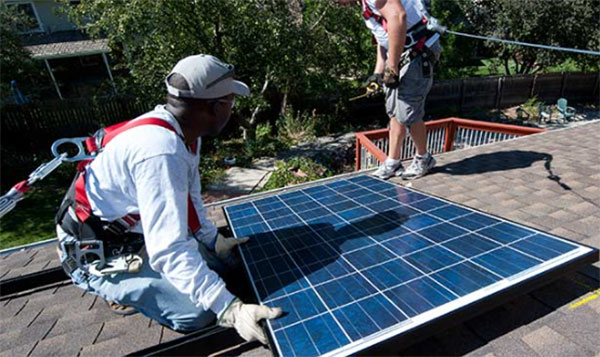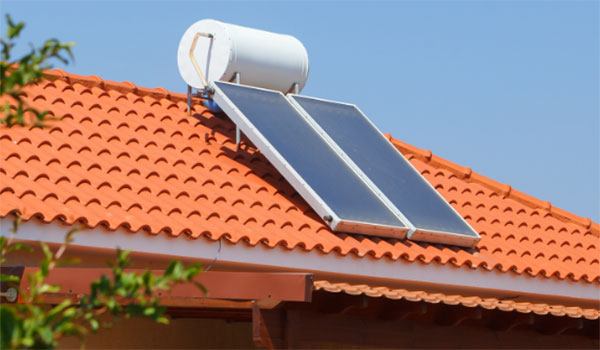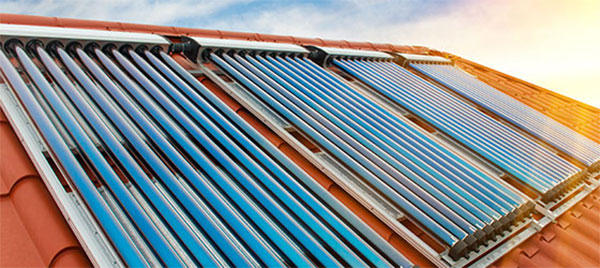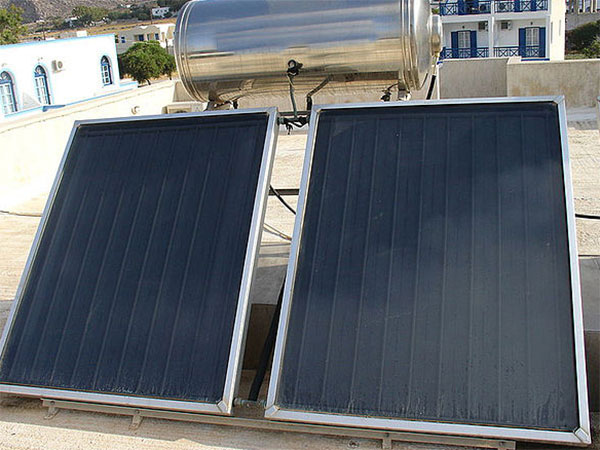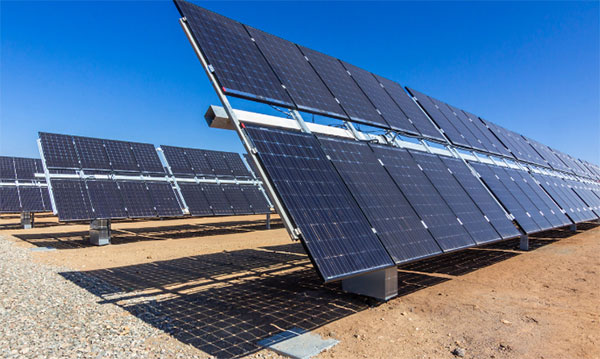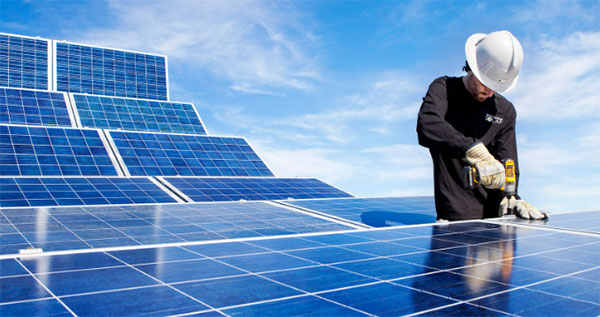Description
Overview of Solar Thermal Technologies
Solar thermal technologies harness the sun's energy to produce hot water, offering a sustainable and cost-effective alternative to traditional water heating methods. These systems convert sunlight into heat and transfer it to water, reducing reliance on fossil fuels and decreasing energy bills.Basics of Solar Water Heating
Solar water heating systems consist of solar collectors and a storage tank. The collectors capture and absorb solar radiation, then transfer the heat to water or a heat-transfer fluid in the system. The heated water is then stored in a tank for later use. The efficiency of these systems can vary, typically ranging from 50% to 70%, depending on the technology used and local climatic conditions. The initial cost for a residential solar water heating system can range from $2,000 to $5,000, with potential savings on energy bills of up to 20% to 40% annually. Solar water heaters come in two main types: active, which uses pumps to circulate water or a heat-transfer fluid through the system, and passive, which relies on gravity and the tendency of hot water to rise. Active systems are more efficient but also more expensive and complex to install.Importance of Solar Thermal in Hot Water Production
Solar thermal technologies play a crucial role in reducing energy consumption and greenhouse gas emissions. By utilizing the abundant and free energy from the sun, these systems can significantly decrease the need for electricity or gas for water heating, leading to lower energy costs and reduced environmental impact. The lifespan of a solar water heating system can be up to 20 to 25 years, making it a long-term investment that can add value to a property. Materials used in solar thermal systems, such as copper, aluminum, and glass, are chosen for their durability and thermal conductivity, ensuring that the systems are both effective in heat transfer and resistant to weather-related wear and tear. The speed at which the system heats water can vary, but generally, a well-sized system can meet most of the hot water needs of a household, even in colder climates.Types of Solar Panels for Water Heating
Solar water heating systems are a sustainable way to generate hot water for residential and commercial use.Flat-Plate Collectors: Structure and Function
| Feature | Description |
|---|---|
| Efficiency | Around 70-80% under optimal conditions |
| Cost | $150 - $350 per square meter |
| Lifespan | 20-25 years |
| Materials | Typically made of copper or aluminum with a glass covering |
| Advantages | Relatively low cost, durable, suitable for a wide range of climates |
| Disadvantages | Less efficient in cooler, cloudy conditions |
Glazed Flat-Plate Collectors: Features and Efficiency
| Feature | Description |
|---|---|
| Efficiency | Slightly higher than unglazed, up to 80-85% |
| Cost | $200 - $400 per square meter |
| Lifespan | Similar to flat-plate collectors, 20-25 years |
| Materials | Copper or aluminum with a tempered glass covering |
| Advantages | Better performance in cooler climates compared to unglazed |
| Disadvantages | Higher cost than unglazed flat-plate collectors |
Integral Collector-Storage Systems: Design and Application
| Feature | Description |
|---|---|
| Efficiency | Moderate, best in regions where temperatures rarely fall below freezing |
| Cost | $1,500 - $3,000 for a complete system |
| Lifespan | 15-20 years |
| Materials | Tanks are often made of stainless steel or copper for durability |
| Advantages | Simple design, no need for a separate storage tank |
| Disadvantages | Not suitable for cold climates, risk of overheating in very sunny climates |
Evacuated-Tube Solar Collectors: Advantages and Use Cases
| Feature | Description |
|---|---|
| Efficiency | High, around 70-95% |
| Cost | $300 - $600 per square meter |
| Lifespan | 15-20 years |
| Materials | Borosilicate glass tubes, copper heat pipes |
| Advantages | High efficiency, performs well in cold and cloudy conditions |
| Disadvantages | Higher initial cost, more fragile than flat-plate collectors |
Comparing Solar Thermal Systems for Hot Water Heating
When investigating the ever-increasing options for solar thermal systems, you must first consider the specific needs of your application. Climate, budget, and space constraints all play key roles. Before you make any decisions, it's important to dive into the efficiency of each system and how climate affects their superiority.
Efficiency Comparisons: Which System Works Best Where
-
Flat-Plate Collectors
Efficiency: Typically about 75-80%
Best for: Moderate to sunny climates with few freeze events
Cost: Approximately $150 to $350 per square meter
Pros: Versatility for residential and commercial applications; lower initial investment than evacuated-tube systems
Cons: Efficiency drops in cloudy or very cold conditions
-
Evacuated-Tube Solar Collectors
Efficiency: High — can exceed 90% under optimal conditions
Best for: Cold, overcast areas; applications requiring higher temperatures
Cost: Around $300 to $600 per square meter
Pros: Best for cold weather; less space required for equivalent output vs. flat-plate
Cons: Higher initial cost, more fragile construction
-
Integral Collector-Storage Systems
Efficiency: Moderate; effective way to provide direct preheating
Best for: Moderate climates with few days below freezing
Cost: $1,500 to $3,000 for a complete system
Pros: Simple to install and use; no need for a separate storage tank
Cons: Not suitable for freezing climates; limited capacity for storing heated water
Climate Considerations in System Selection
How different solar thermal systems perform under various climate conditions will be the most significant factor in choosing the right system for your application:
Warm and Sunny Climates:
Flat-plate collectors are a good choice in this case because they offer a good balance of efficiency and cost.
Integral collector-storage systems are relatively low-cost options — and they offer an excellent day-time supply of a heated water without the complexity of a full collector system.
Cold and Cloudy Climates:
Evacuated-tube collectors are superior for this application because of their excellent insulation, as well as their ability to capture diffuse sunlight. In order to maintain an adequate supply of hot water, these systems must be sized for lower sunlight availability — potentially with a supplementary heating method for prolonged overcast periods.
Variable Climates:
A hybrid system that incorporates both evacuated-tube and flat-plate collectors will offer the best overall performance year-round.
Lastly, don’t forget freeze protection for your solar thermal collectors in any area that may experience freezing temperatures. Antifreeze systems may require more design effort, but they’re essential for areas where collectors may be exposed to freezing conditions.
Installation and Maintenance of Solar Water Heating Panels
Optimizing the performance of solar water heating systems involves careful consideration of site selection, system sizing, and adherence to routine maintenance. Below, we detail the essentials for ensuring your system operates efficiently and lasts as long as possible.Site Selection and System Sizing for Optimal Performance
- Site Selection:
- Orientation and Tilt: Aim for a south-facing orientation (in the Northern Hemisphere) with a tilt angle between 30° to 45° for optimal sun exposure year-round.
- Shading: Minimize shading from trees, buildings, or other structures, especially between 9 AM and 3 PM, when the sun is most potent.
- Roof Condition and Space: Ensure the roof structure is strong enough to support the system's weight and has enough space for the desired number of panels.
- System Sizing:
- Household Size and Water Usage: A typical household requires about 20 gallons of hot water per person per day. System sizing should meet these needs based on local solar irradiance levels.
- Climate Factors: In cooler climates, you may need a larger collector area or supplemental heating to achieve the same water temperature levels.
- Cost and Efficiency: Systems cost between $2,000 and $5,000 on average, with efficiency rates ranging from 50% to 70%. Balancing cost and efficiency is crucial for long-term savings.
Routine Maintenance Requirements and Longevity Tips
- Maintenance Checklist:
- Inspection for Damage or Leaks: Perform semi-annual inspections of collectors, storage tanks, and piping for any signs of damage or leaks.
- Cleaning Collectors: Clean the glass surfaces of collectors as needed to remove dust, dirt, or snow that could obstruct sunlight.
- System Flush: Annually flush the system to remove sediment and prevent blockage, especially in systems using hard water.
- Longevity Tips:
- Antifreeze Solutions: For systems in freezing climates, use non-toxic antifreeze solutions to prevent damage during winter.
- Replacement of Worn Parts: Proactively replace worn or deteriorating components, such as seals and insulation, to maintain system efficiency.

